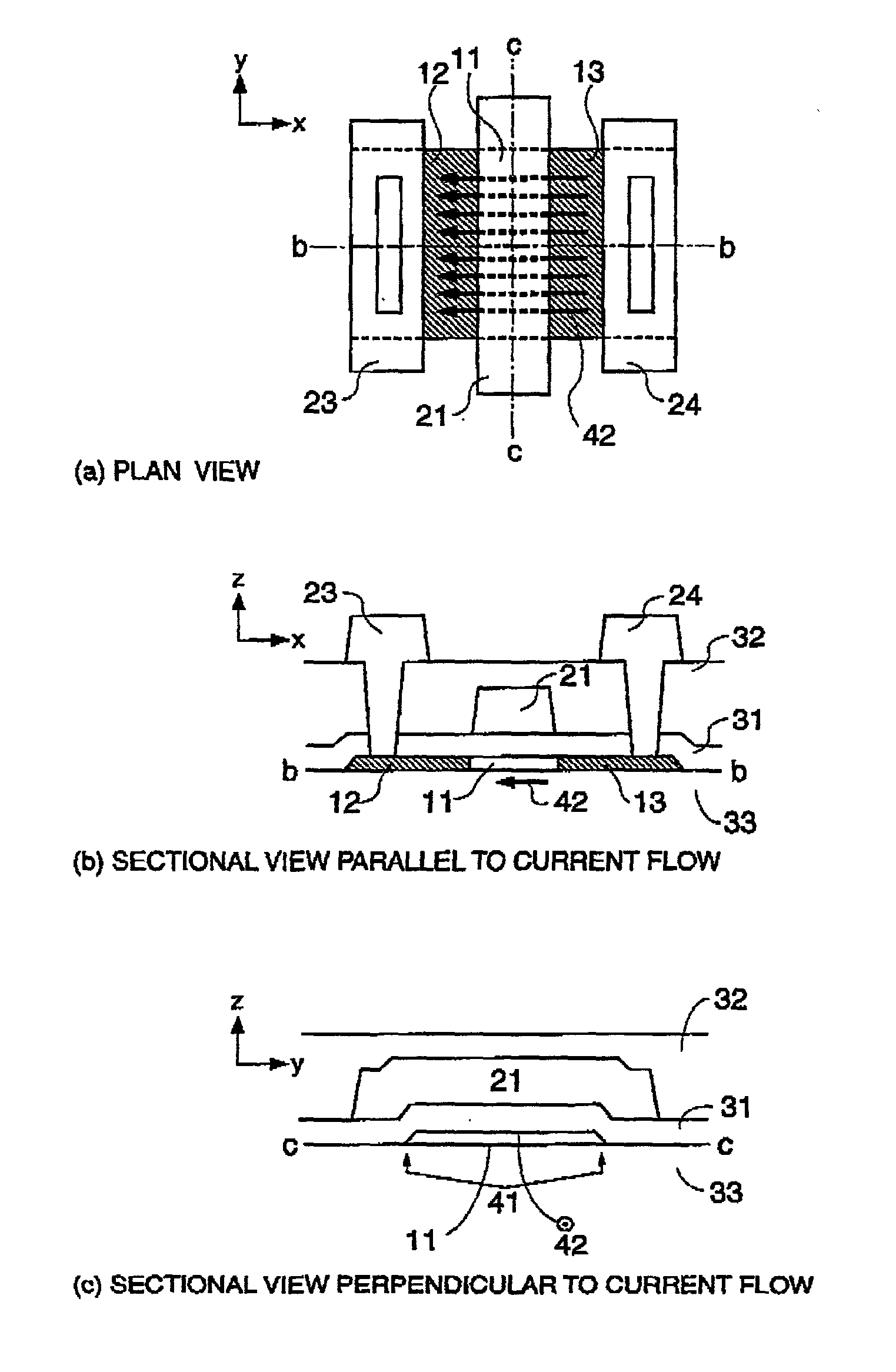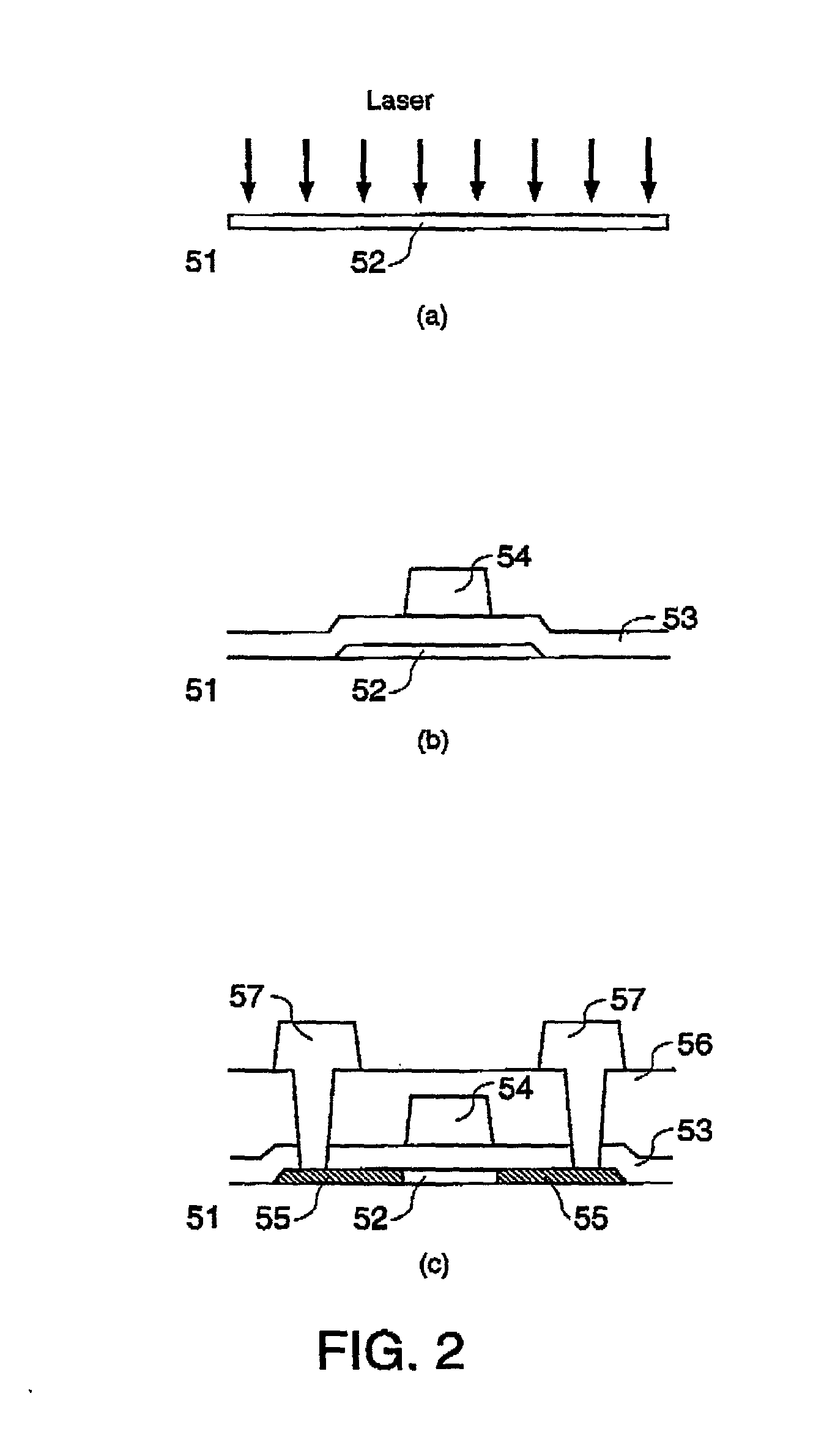Semiconductor device, circuit board, electro-optical device, and electronic apparatus
a technology of semiconductor devices and circuit boards, applied in semiconductor devices, optics, instruments, etc., can solve the problems of carrier concentration being liable to increase, degradation over time arising, performance deterioration, etc., and achieve the effect of reducing the degradation of semiconductor films, reducing the degradation of circuits over time, and efficient release of heat generated in semiconductor films
- Summary
- Abstract
- Description
- Claims
- Application Information
AI Technical Summary
Benefits of technology
Problems solved by technology
Method used
Image
Examples
first embodiment
[0059] (First Embodiment)
[0060] FIG. 4 is composed of a schematic plan view and two sectional views of a thin-film transistor according to a first embodiment of the present invention. In the thin-film transistor, a semiconductor film composed of a highly-doped source region 12, a highly-doped drain region 13, and an active region 11 is formed of polycrystalline silicon. The thin-film transistor, basically, has the same structure as the conventional, typical thin-film transistor shown in FIG. 1. However, as shown in FIG. 4, a gate electrode 21 is disposed so as not to cover ends of the semiconductor film composed of the highly-doped source region 12, the highly-doped drain region 13, and the active region 11. Also, a sub gate electrode 22 connected with the gate electrode 21 is formed so as to extend past ends 41 of the semiconductor film.
[0061] The distributions of the electric field strength and the carrier concentration of the thin-film transistor according to this embodiment were...
second embodiment
[0064] (Second Embodiment)
[0065] FIG. 6 is composed of a schematic plan view and two sectional views of a thin-film transistor according to a second embodiment of the present invention. In the thin-film transistor, a semiconductor film composed of the highly-doped source region 12, the highly-doped drain region 13, and the active region 11 has an intrinsic-semiconductor region 14 at ends thereof. Since the intrinsic-semiconductor region 14 is not in the flow of current 42, deterioration in the performance of the device over time, which is due to a high electric field strength and a high carrier concentration, can be reduced even if the high electric field strength and the high carrier concentration occur in the intrinsic-semiconductor region 14.
third embodiment
[0066] (Third Embodiment)
[0067] FIG. 7 is a schematic plan view of a thin-film transistor according to a third embodiment of the present invention and FIG. 8 is a sectional view of the thin-film transistor in the direction perpendicular to the current flow. A sectional view in the direction parallel to current flow is substantially the same as shown in FIG. 6(b) and is thus omitted. The semiconductor film of the thin-film transistor shown in FIG. 7 is separated into a plurality of portions by a plurality of intrinsic-semiconductor regions 14 disposed in parallel with a current 42 flowing between the source and the drain. This structure is suitable to reduce degradation over time caused due to a high electric field strength and a high carrier concentration which occur at the end potions of the semiconductor film, thus releasing heat generated while the current flows. In addition, since the intrinsic-semiconductor region 14 is formed simply by doping a desired position or area with do...
PUM
| Property | Measurement | Unit |
|---|---|---|
| width | aaaaa | aaaaa |
| semiconductor | aaaaa | aaaaa |
| electric power | aaaaa | aaaaa |
Abstract
Description
Claims
Application Information
 Login to View More
Login to View More - R&D
- Intellectual Property
- Life Sciences
- Materials
- Tech Scout
- Unparalleled Data Quality
- Higher Quality Content
- 60% Fewer Hallucinations
Browse by: Latest US Patents, China's latest patents, Technical Efficacy Thesaurus, Application Domain, Technology Topic, Popular Technical Reports.
© 2025 PatSnap. All rights reserved.Legal|Privacy policy|Modern Slavery Act Transparency Statement|Sitemap|About US| Contact US: help@patsnap.com



